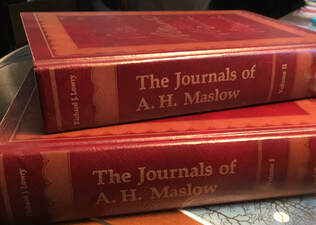
In 2016 Todd Bridgman and Steve Cummings, both professors at Victoria University of Wellington in New Zealand, invited me to join them in trying to answer those questions. Our search was exhaustive, including research in the Maslow archive at the Center for the History of Psychology at the University of Akron in Ohio. We found no reference to a pyramid in Maslow’s publications, letters, notes, or unpublished manuscripts.
The earliest graphic we found for the need hierarchy was in a 1957 textbook by Keith Davis, Human Relations in Business. It was a right-sided triangle, a series of steps for each need level. The earliest pyramid that is similar to those we see everywhere today was in an article by C. D. McDermid in 1960. The article was “How Money Motivates Men” in the then popular management publication Business Horizons.
In our paper, "Who Built Maslow’s Pyramid? A History of the Creation of Management Studies’ Most Famous Symbol and Its Implications for Management Education,” (published in the March 2019 issue of the Academy of Management Learning & Education), we discussed three problems with the depiction of the hierarchy of needs as a pyramid.
1. The pyramid is simply a poor and misleading representation of Maslow’s theory. Until the 1980s a ladder more often and more accurately represented the hierarchy. For example:
- You can go up and down a ladder. Just because your physiological needs are satisfied does not mean your hunger, for example, does not affect your behavior. It just does not dominate or organize your psyche – but if conditions changed, Maslow is clear: physiological needs “may emerge again to dominate the organism if they are thwarted” (1943, p. 375).
- A pyramid has a pinnacle. Nothing beyond. A ladder may be extended or more steps added. In his latter years Maslow’s thinking turned increasing toward states beyond self-actualization, such as self-transcendence.
- Maslow’s theory is full of nuance, has preconditions, was a general theory of human motivation. It was not conceived as a theory of workplace motivation per se.
- Furthermore Maslow spoke to criticisms some would later make of his theory and “explicitly cautioned against his ideas being interpreted in these ways.”
- Consider the workplace implications of the preconditions (Maslow, 1943, p. 383):
freedom to do what one wishes so long as no harm is done to others,
freedom to express one’s self,
freedom to investigate and seek for information,
freedom to defend one’s self,
justice,
fairness,
honesty,
orderliness in the group”
- Maslow championed self-expression and development of creativity in its different forms.
Some of our conclusions:
1. It is important to use primary sources where possible. Over time ideas and theories can mutate, change meaning, be presented differently than originally conceived. Our story about Maslow’s pyramid is probably representative.
2. There are insights to be learned, studied, from scholars before empiricism became the benchmark.
3. To understand Maslow, start with his 1943 paper, “A Theory of Human Motivation.”
And my take-aways:
1. Maslow spoke to knowing yourself and realizing your potential, and that was not necessarily striving for money and power. It was allowing yourself to be, to grow, to express yourself in the world, in relationships, in community, and yes in the workplace.
2. Maslow was not a perfect individual. He was to some degree the product of his times when many attitudes were very different from today. But he wrote about, talked about ideas that speak to the very best of what it means to be a human being.
3. On a personal note: Our Maslow paper was selected as the 2019 Best Article Award in the Academy of Management Learning & Education journal. I thank Todd and Steve for inviting me along on this part of their journey.
Bridgman, T., Cummings, S., & Ballard, J. (2019). Who built Maslow’s pyramid? A history of the creation of management studies’ most famous symbol and its implications for management education. Academy of Management Learning & Education, 18, 81-98.
Davis, K. (1957). Human relations in business. New York: McGraw-Hill.
Maslow, A. (1943). A theory of human motivation. Psychological Review, 50(4): 370-396.
McDermid, C. D. (1960). How money motivates men. Business Horizons, 3(4): 93-100.
Image, "Maslow's journals", © John Ballard, 2019
© John Ballard, PhD, 2020. All rights reserved. Updated 2021.
_________________________
Decoding the Workplace “deals with principles and practices that are timeless . . . Is this a must-have for managers and would-be managers? Yes.” Ron Riggio, Book Review, Academy of Management Learning & Education, June, 2018. Now also available as an audiobook and paperback.
 RSS Feed
RSS Feed